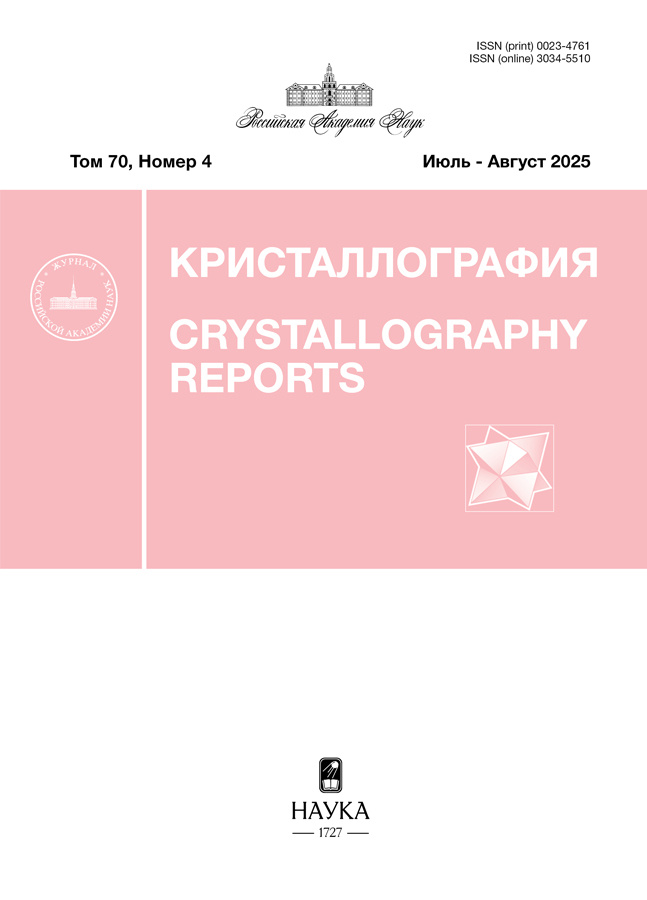Тонкие текстурированные пленки CdTe на подложках из кремния и сапфира: термическое напыление из газовой фазы и структурная характеризация
- Авторы: Кошелев И.О.1, Волчков И.С.1, Подкур П.Л.1, Хайретдинова Д.Р.2, Долуденко И.М.1, Каневский В.М.1
-
Учреждения:
- Институт кристаллографии им. А.В. Шубникова Курчатовского комплекса кристаллографии и фотоники НИЦ “Курчатовский институт”
- Национальный исследовательский технологический университет “МИСИС”
- Выпуск: Том 69, № 2 (2024)
- Страницы: 314-318
- Раздел: ПОВЕРХНОСТЬ, ТОНКИЕ ПЛЕНКИ
- URL: https://permmedjournal.ru/0023-4761/article/view/673212
- DOI: https://doi.org/10.31857/S0023476124020151
- EDN: https://elibrary.ru/YSFTQM
- ID: 673212
Цитировать
Полный текст
Аннотация
Методом термического напыления из газовой фазы выращены тонкие пленки CdTe на подложках Si (111) и Al2O3 (0001). Полученные пленки изучены методами атомно-силовой и растровой электронной микроскопии, а также рентгенофазового анализа. Обнаружено, что на подложках Al2O3 (0001) возможно получение тонких пленок как вюрцитной модификации CdTe, так и сфалеритной. На подложках Si возможно получение тонких пленок сфалеритной модификации CdTe. Показано, что элементный состав тонких пленок близок к стехиометрии, причем в случае тонких пленок, выращенных на Al2O3 (0001), отклонение не превышало 1 ат. %.
Полный текст
Об авторах
И. О. Кошелев
Институт кристаллографии им. А.В. Шубникова Курчатовского комплекса кристаллографии и фотоники НИЦ “Курчатовский институт”
Автор, ответственный за переписку.
Email: iliakoscheleff@yandex.ru
Россия, Москва
И. С. Волчков
Институт кристаллографии им. А.В. Шубникова Курчатовского комплекса кристаллографии и фотоники НИЦ “Курчатовский институт”
Email: iliakoscheleff@yandex.ru
Россия, Москва
П. Л. Подкур
Институт кристаллографии им. А.В. Шубникова Курчатовского комплекса кристаллографии и фотоники НИЦ “Курчатовский институт”
Email: iliakoscheleff@yandex.ru
Россия, Москва
Д. Р. Хайретдинова
Национальный исследовательский технологический университет “МИСИС”
Email: iliakoscheleff@yandex.ru
Россия, Москва
И. М. Долуденко
Институт кристаллографии им. А.В. Шубникова Курчатовского комплекса кристаллографии и фотоники НИЦ “Курчатовский институт”
Email: iliakoscheleff@yandex.ru
Россия, Москва
В. М. Каневский
Институт кристаллографии им. А.В. Шубникова Курчатовского комплекса кристаллографии и фотоники НИЦ “Курчатовский институт”
Email: iliakoscheleff@yandex.ru
Россия, Москва
Список литературы
- Owens A., Peacock A. // Nucl. Instrum. Methods Phys. Res. A. 2004. V. 531. P. 18. https://doi.org/10.1016/j.nima.2004.05.071
- Fonthal G., Tirado-Mejıa L., Marın-Hurtado J.I. et al. // J. Phys. Chem. Solids. 2000. V. 61. № 4. P. 579. https://doi.org/10.1016/S0022-3697(99)00254-1
- Rühle S. // Sol. Energy. 2016. V. 130. P. 139. https://doi.org/10.1016/j.solener.2016.02.015
- Munshi A.H., Kephart J.M., Abbas A. et al. // Sol. Energy Mater. Sol. Cells. 2018. V. 176. P. 9. https://doi.org/10.1016/j.solmat.2017.11.031
- Ivanov Yu.M. // J. Сryst. Growth. 1996. V. 161. № 1–4. P. 12. https://doi.org/10.1016/0022-0248(95)00604-4
- Михайлов В.И., Поляк Л.Е. // Поверхность. Рентген., синхротр. и нейтр. исслед. 2021. Т. 7. C. 43. https://doi.org/10.31857/S102809602107013X
- Zhang S., Zhang J., Qiu X. et al. // J. Cryst. Growth. 2020. V. 546. P. 125756. https://doi.org/10.1016/j.jcrysgro.2020.125756
- Михайлов В., Буташин А., Каневский В. и др. // Поверхность. Рентген., синхротр. и нейтр. исслед. 2011. Т. 6. C. 97.
- Ramanujam J., Bishop D., Todorov T. et al. // Prog. Mater. Sci. 2020. V. 110. P. 100619. https://doi.org/10.1016/j.pmatsci.2019.100619
- Dharmadasa I., Echendu O., Fauzi F. et al. // J. Mater. Sci.: Mater. Electron. 2017. V. 28. P. 2343. https://doi.org/10.1007/s10854-016-5802-9
- Quintana-Silva G., Sobral H., Rangel-Cárdenas J. // Chemosensors. 2022. V. 11. № 1. P. 4. https://doi.org/10.3390/chemosensors11010004
- Quiñones-Galván J., Camps E., Campos-González E. et al. // J. Appl. Phys. 2015. V. 118. № 12. P. 125304. https://doi.org/10.1063/1.4931677
- Гельман Ю., Дымшиц Ю., Самохвалов Ю. и др. // Приборы и техника эксперимента. 1994. № 5. C. 181.
- Jiménez-Sandoval S., Meléndez-Lira M., Hernández-Calderón I. // J. Appl. Phys. 1992. V. 72. № 9. P. 4197. https://doi.org/10.1063/1.352230
- Zanio K. Semiconductors and Semimetals. V. 13. New York: Academic press, INC., 1978. 235 p.
Дополнительные файлы















